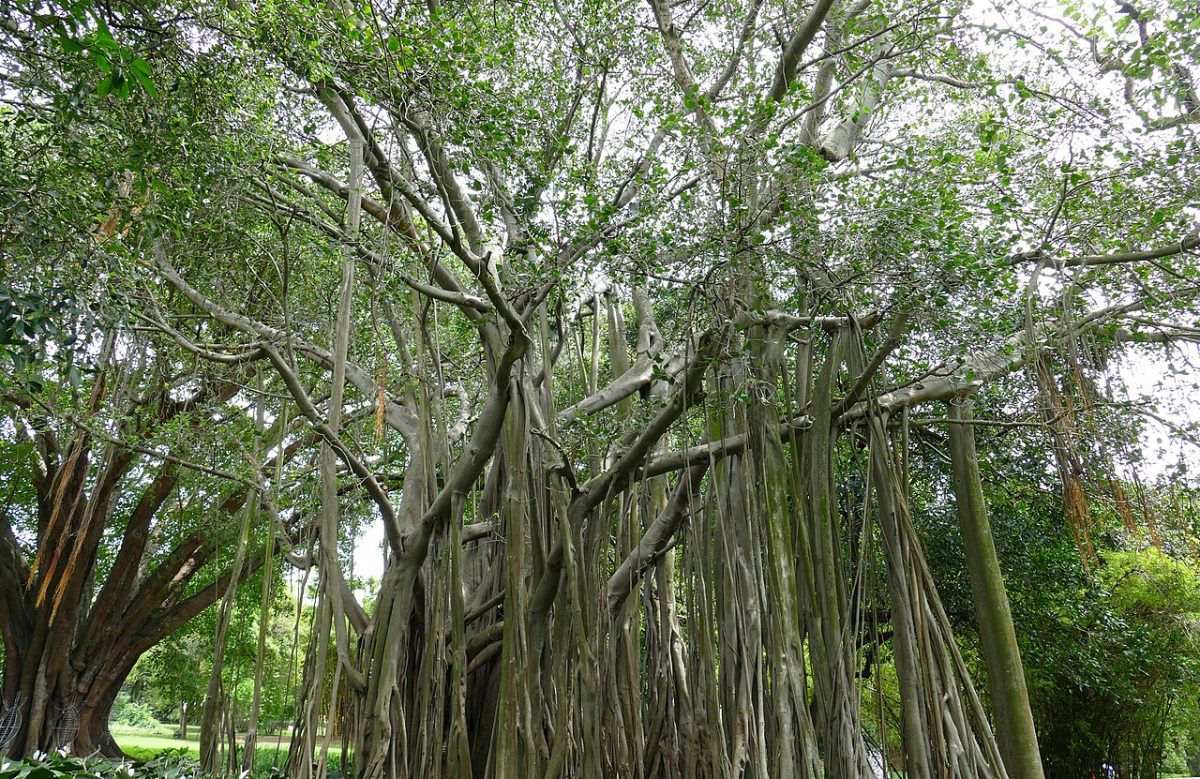
Image - Wikimedia / Sten
Plants of the genus Ficus are some of those with the longest roots, so much so that it is not recommended to have them in small gardens as they could cause many serious problems. But despite this, if there is something they have, it is ornamental value, which is why they are very loved as indoor plants, bonsai and, also, on the grounds. There are some that even produce edible fruits whose flavor is delicious: the ficus carica, or as we know it in Spain fig tree.
There are some 900 different varieties of Ficus that live mainly in tropical regions of the world, often in jungles and rain forests. But there are exceptions. We are going to learn more about this genre that can give us so many joys, if we know how to take good care of it.
Origin and characteristics of Ficus
Ficus can be trees, shrubs or climbers depending on the species, are characterized by having latex inside. This latex is a whitish substance that helps them heal wounds, but it causes irritation and redness of the skin in humans.
Its height and leaves vary. For example, him Ficus elastica is an evergreen tree 20 meters high that has simple, whole leaves with a size of about 20 centimeters long by 10-15 centimeters wide, on the other hand the ficus carica It is a small deciduous tree 5-7 meters high with palm-lobed leaves.
But if there is something they have in common, it is their fruitlessness, or as we call them: figs. Botanists call them syconos, and They are false fruits in whose interior are the flowers, which are pollinated by the fig wasps that reach them entering through the small hole at one end. They can be large or small, edible or not, but all have a similar bulbous shape.
Types of Ficus
The most popular Ficus species are:
ficus benghalensis
It is known as a banyan or strangler fig, and is endemic to Bangladesh, India, and Sri Lanka. It begins as an epiphyte, but ends up forming a trunk from which roots sprout that serve to provide better support. Height varies, but is generally about 10 meters. Its extension, on the other hand, can be impressive: specimens have been found that occupy an area of 12 thousand square meters.
Resists up to 0 degrees; that is, it can live only in climates without frost. In fact, the ideal is that it does not drop below 2ºC.
Ficus benjamina

Image - Wikimedia / Forest and Kim Starr
Known as indian laurel or ficus benjamina, is an evergreen tree that grows in Southeast Asia and Australia. Despite his last name, it is a plant that can easily reach 15 meters in height. The trunk can be very thick, but not as thick as that of other species (it is rare that it exceeds one meter in diameter).
Withstands frosts down to -2ºC, provided they are punctual.
ficus carica
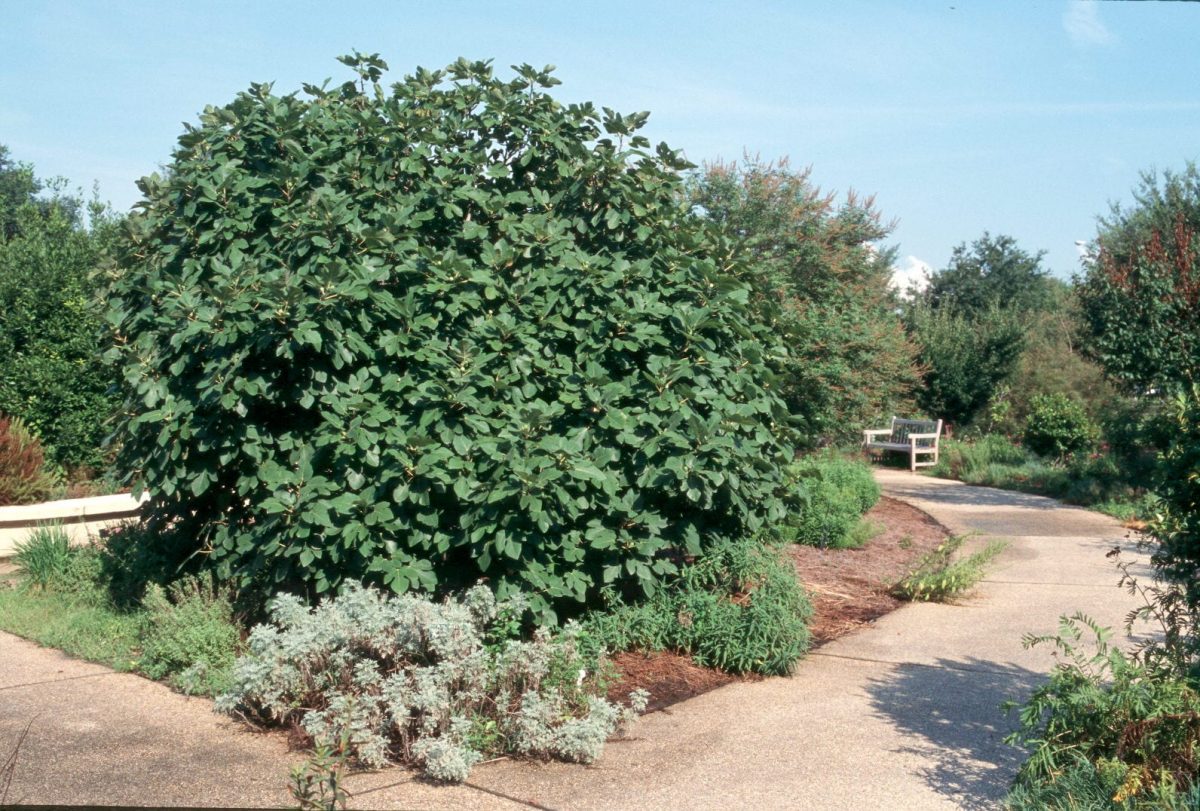
Image - Online Plant Guide
Is the common fig tree, a deciduous tree-sapling native to Southwest Asia that has become naturalized in the Mediterranean region. Reaches a maximum height of 8 meters, with a very open glass if it is allowed to grow on its own. The leaves are composed of 3 or 7 green leaflets, and fall in autumn-winter. During the summer it produces fruits, figs, which are edible.
It is a plant that holds up well up to -7ºC.
Ficus elastica (syn. robust ficus)

Image - Wikimedia / PseudoscienceFTL
Well known by the name of gum and for the rubber tree, it is an evergreen tree native to India and Indonesia that reaches between 20 and 30 meters in height. Its trunk thickens up to 2 meters in diameter, and its branches sprout oblong leaves up to 30 centimeters long and up to 10 centimeters wide.
It is widely used as an indoor plant, although it needs a lot of light to live well. Resists up to -1ºC.
ficus lyrata
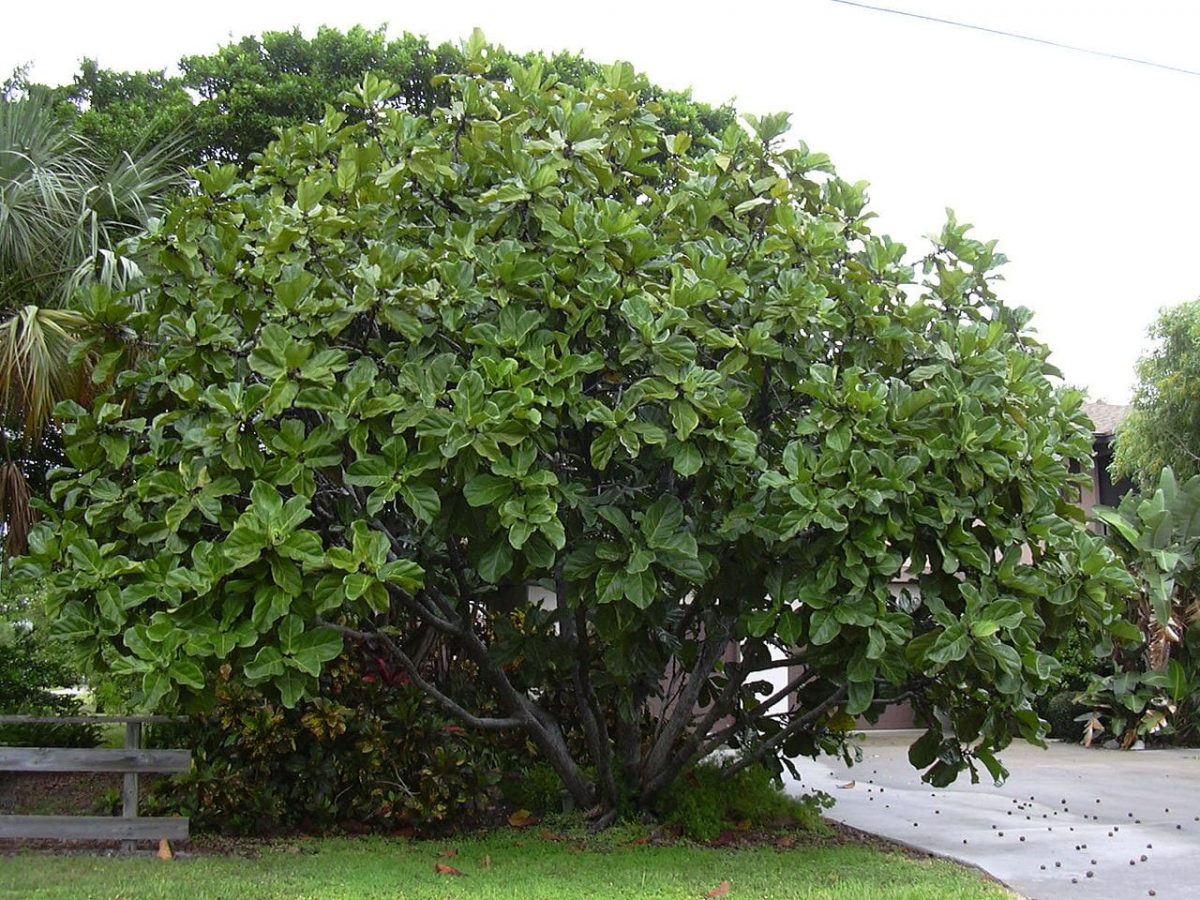
Image - Wikimedia / Forest & Kim Starr
It is known as fig tree fiddle leaf, and is an evergreen tree native to West Africa that reaches 15 meters in height. The leaves are green, reaching 45 centimeters long by 30 centimeters wide once adult.
He does not like the cold. The most advisable thing is to have it either as an indoor plant or in a greenhouse in case the temperature drops below 5ºC.
Ficus macrophylla
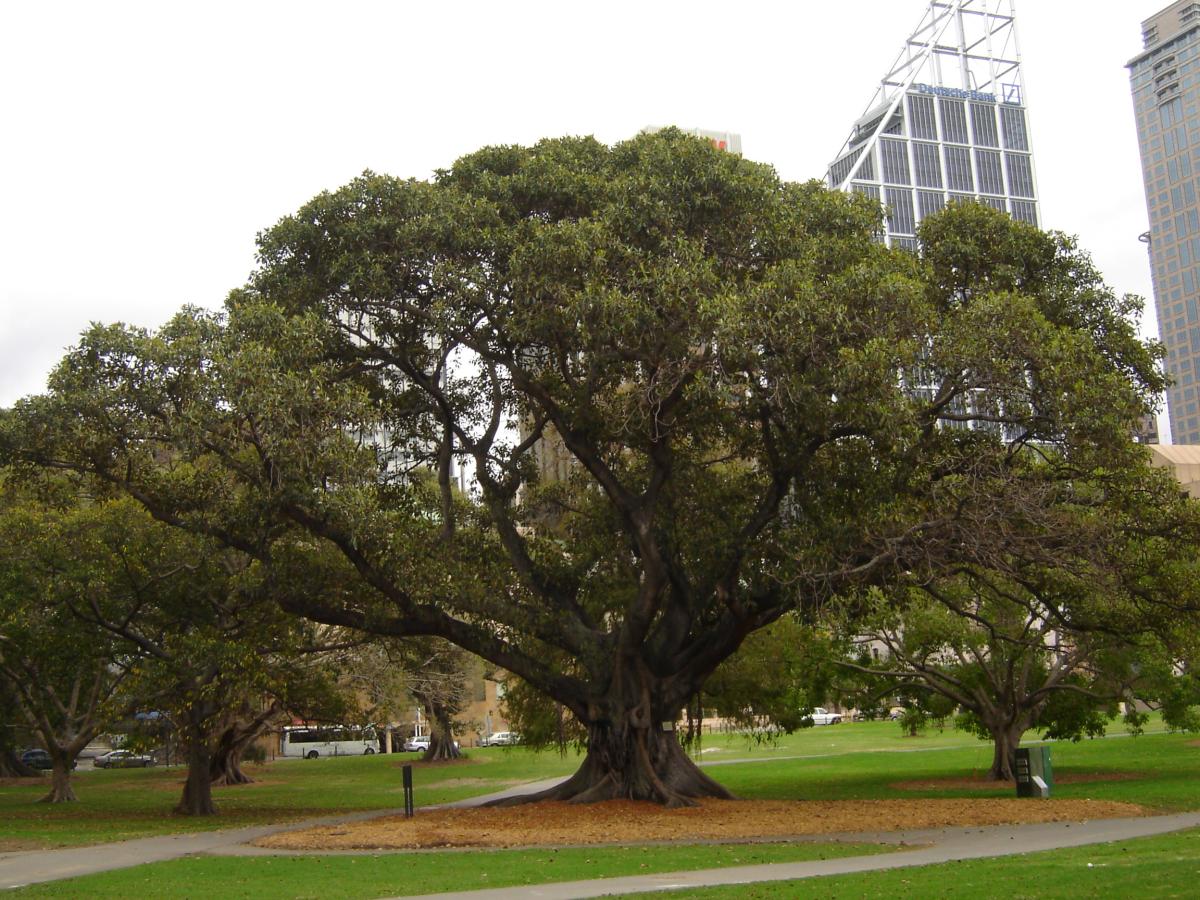
Image - Wikimedia / DO'Neil
El Ficus macrophylla It is an evergreen tree known as the Moreton Bay fig, which begins life as an epiphyte but ends up as a tree. It is native to Australia, specifically the east coast, and it can reach 60 meters in height. Its leaves are elongated, 15 to 30 centimeters long, and dark green.
Resists up to -4ºC.
Ficus microcarp (Syn. Ficus nitida, Ficus ginseng y Ficus retusa)
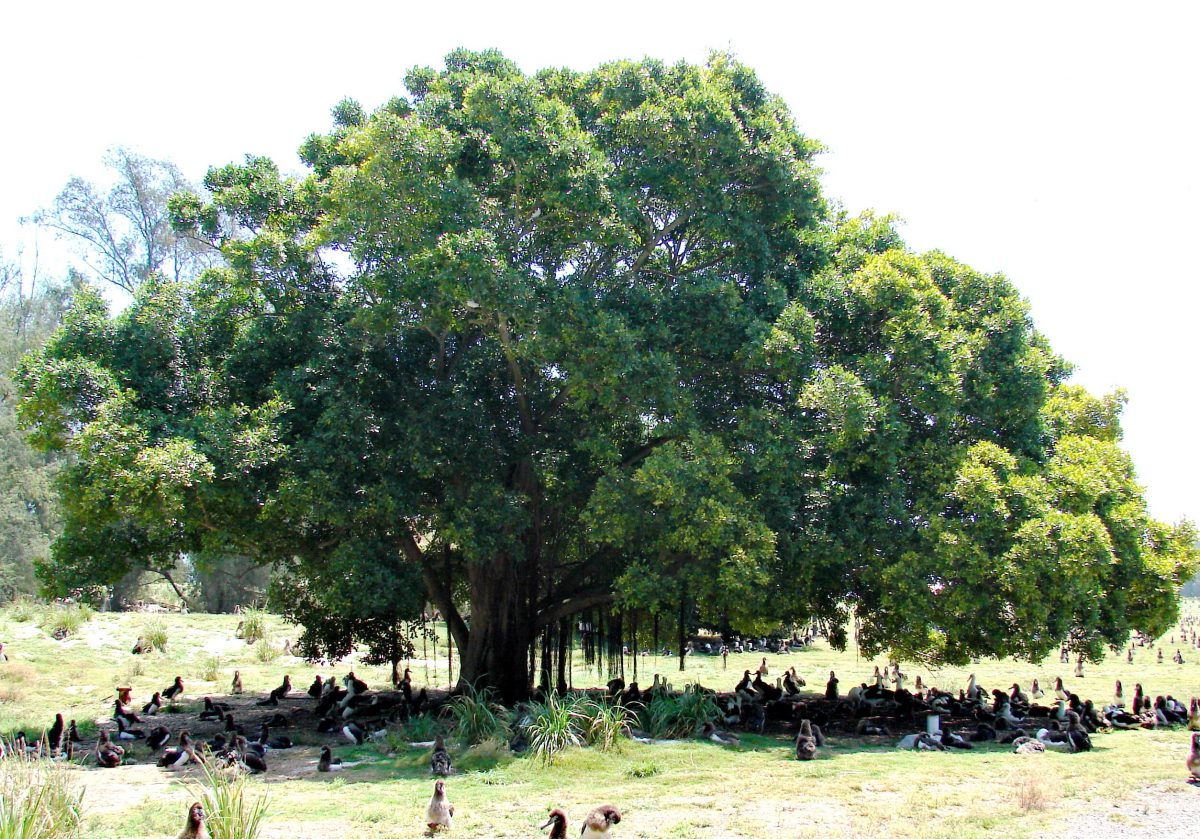
Image - Wikimedia / Forest & Kim Starr
El Ficus microcarp an evergreen tree known as Indian laurel, and is native to Asia, specifically the south and southeast. Its height is about 15 meters, although it can reach 20 meters if the right conditions are met. Like all Ficus, it emits aerial roots that when touching the ground thicken, joining the trunk over time. The leaves are dark green, and are between 4 and 13 centimeters long.
Like the F. macrophylla, withstands frosts down to -4ºC.
Ficus pumila (syn. ficus repens)
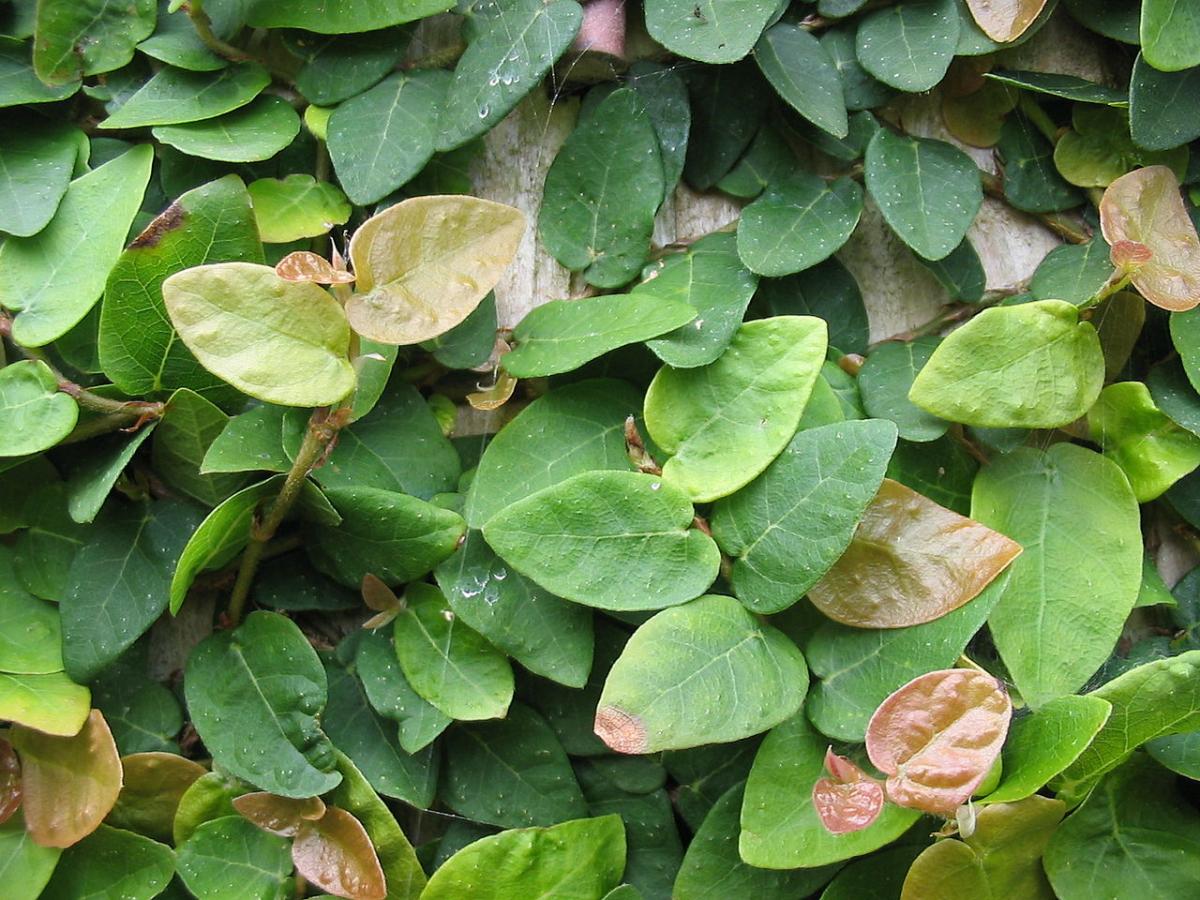
Image - Wikimedia / Ixitixel
El Ficus line up is an evergreen climbing species native to eastern Asia. If you have support, can be up to 4 meters long, but if not, it will grow like a pretty creeping plant. The leaves are simple, green, and about 14 centimeters long.
Withstands the cool and frost down to -3ºC.
Religious ficus

Image - Wikimedia / Vinayaraj
El Religious ficus It is a semi-deciduous tree that grows wild in Nepal, India, China, Indochina, and Vietnam. Reaches 35 meters in height, and its trunk measures 3 meters or in some cases more in diameter. Its leaves are green, up to 17 centimeters long by 12 centimeters wide.
Due to its origin, it cannot bear the cold, so it should only be grown in hot climates.
How to care for a ficus?
If you want to have a Ficus at home or in the garden, we recommend you take care of it as follows:
- Location:
- Outdoors: it must be in a sunny or bright area, so that it can grow well. If you are going to have it in the ground, keep in mind that its roots are very invasive, so you have to plant it at least 10 meters from where there are pipes.
- Indoor: put it in a room where there is a lot of light, and where it can be away from drafts. Likewise, the humidity must be high, so it is advisable to put containers with water or plants - with their respective pots - around it.
- Irrigation: How often is a ficus watered? Depends. In summer it may be necessary to water it 3 or even 4 times a week, while in winter it will be watered 1 or 2 times every seven days.
- Subscriber: it is highly recommended to fertilize it, especially if it is in a pot, with fertilizers rich in nutrients such as guano or mulch. Do it from spring to summer.
- Transplant: Spring is a good time to plant it in the garden, or in a larger pot if necessary. By the way, transplantation to a larger recipient has to be done every 2 or 3 years.
- Pruning: We do not recommend pruning it, since the beauty of Ficus is its size, its elegance. Now, sometimes there is no other choice, either because you want to control its growth and have it with a smaller size. So if you have to prune it, you can do it in early fall or spring.
How many years can a ficus live?
Many, but it really depends on the care you receive and where you keep it. For example, specimens of ficus benghalensis more than 200 years old, but a Ficus benjamina grown in a pot indoors it is rare that it lives more than 10 years. I myself had a fig treeF.carica) in the garden that with 50 years the main trunk died and now the children remain.
To get everything that has to live to live, the ideal is to have it outside, planted in the ground, and avoid drastic pruning.
What are the roots of a ficus like?
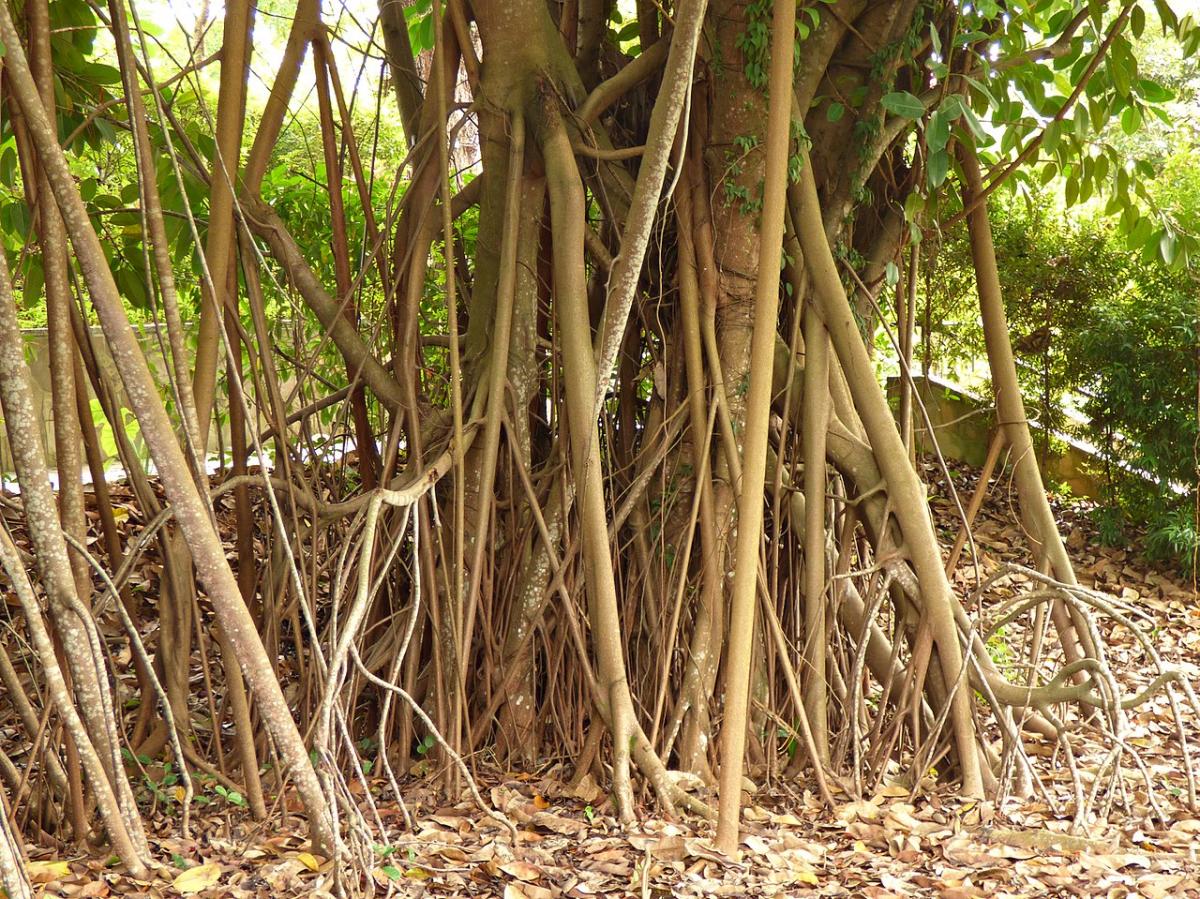
Roots of Ficus elastica.
The roots of these plants they are large, fasciculated and also thick. They can extend several meters (10 at least), and it is easy for them to break pipes and paved floors.
While there are dwarf cultivars, such as Ficus benjamina »Kinky» that do not exceed 2 meters in height, if you want to put one of these trees in your garden it is better that you put it away from what could destroy if it were nearby.
We hope you liked learning more about Ficus.
